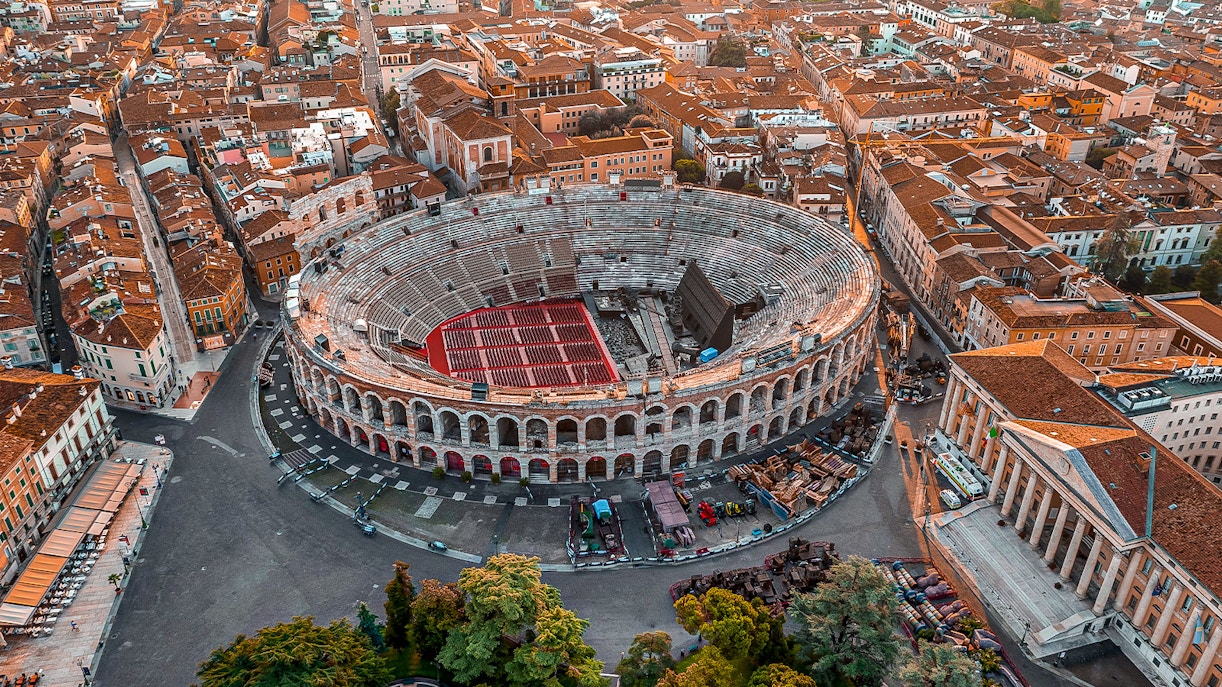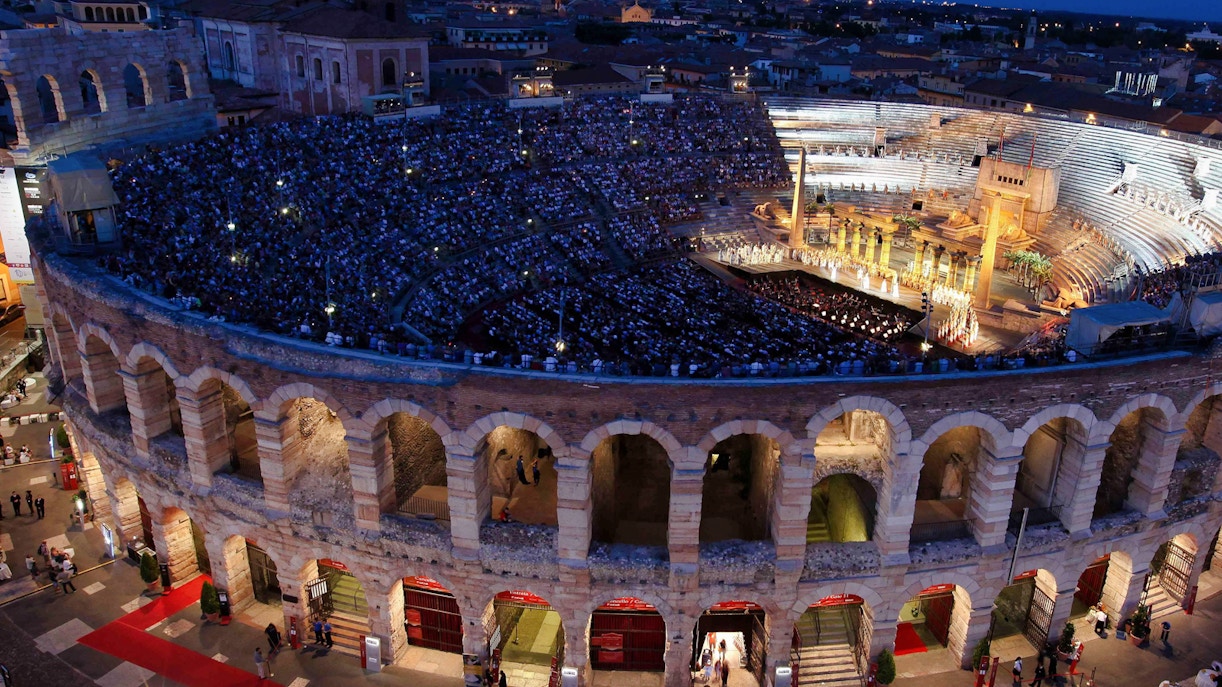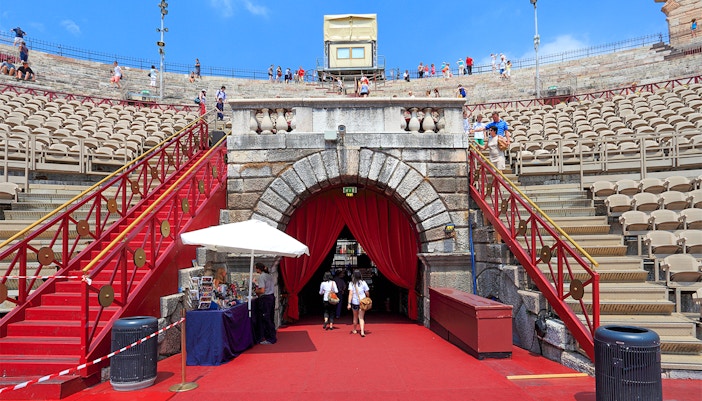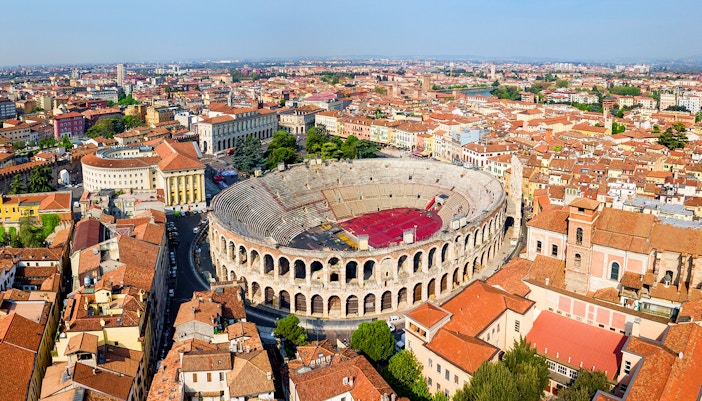- See a top-preserved ancient amphitheater: The Verona Arena stands tall even after 2,000 years, and it is the third biggest amphitheater still around in Europe, just after the Colosseum. The arena's big oval shape and tall stone walls show how skilled the ancient Romans were at building.
- Enjoy opera and global concerts: Once a venue for gladiator fights, the arena now stages performances by international bands and artists like Pink Floyd, Roger Waters, Alicia Keys, Evanescence and Muse. It also hosts operas! Experience the magic of timeless classics like Aida and Carmen or beloved masterpieces like La Traviata and Turandot while being seated under the open sky, surrounded by the ancient walls of the amphitheater.
- Appreciate unique acoustics: If you attend one of the opera events happening at the arena, you can experience exceptional clarity and resonance of sound in the arena due to its remarkable acoustics. The oval shape and stone construction of the amphitheater allow for sound waves to travel and amplify, creating a captivating auditory experience for spectators during performances.
- Soak in the cityscape views: Climb to the highest rows of the Arena and treat yourself to the charming cityscape, taking in sights of the bustling Piazza Bra, the Adige River, and the rolling hills beyond. For added magic, visit during or after sunset when the city shines with lights.

























